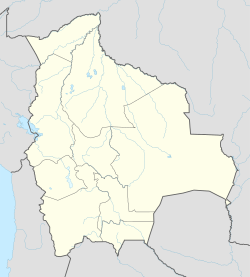Top Qs
Timeline
Chat
Perspective
Yacuiba
City in Tarija, Bolivia From Wikipedia, the free encyclopedia
Remove ads
Yacuiba is a city in southern Bolivia and the capital city of Gran Chaco Province in the Tarija Department. It lies three kilometers from the Argentine border. It has a population of approximately 97,000[2] and lies 620 to 680 m (2,034–2,231 ft) above sea level. Yacuiba is one fastest growing cities in Bolivia in terms of population due to the commerce and boom in hydrocarbon exploitation [citation needed]. It was part of Salta Province of Argentina until its cession to Bolivia in 1900.
Due to its position on the frontier, Yacuiba is a major center of commerce. Across the border lies Salvador Mazza, with which it forms a conurbation.
The town has direct connections by road with both Tarija and Santa Cruz. It also has an international airport (BYC). Despite its relatively small population, Yacuiba managed to obtain one football team in the Bolivian professional league, Club Petrolero.
Remove ads
Climate
Summarize
Perspective
Yacuiba has a dry-winter humid subtropical climate (Köppen: Cwa), a result of its slightly cooler temperatures when compared to surrounding regions because of its modest elevation and the monsoonal effects of the surrounding area.
Remove ads
Etymology
The city's name is derived from the Guaraní yaku-iba, meaning roughly "fowls' watering hole"
References
External links
Wikiwand - on
Seamless Wikipedia browsing. On steroids.
Remove ads



